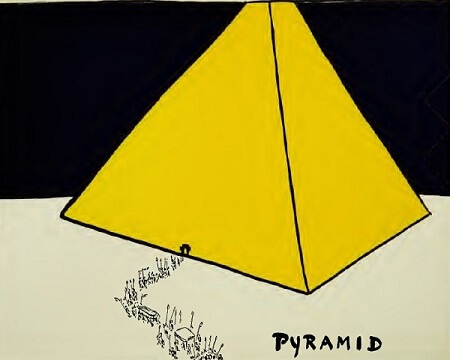Activity 1: Narrate the Chapter
- After you listen to the chapter, narrate the chapter aloud using your own words.
Activity 2: Design Your Own Pyramid

- Click the crayon above. Complete page 19 of 'Second Grade World History Coloring Pages, Copywork, and Writing.'
Using a pencil with an eraser, draw and decorate your own three-dimensional triangular pyramid.
- Draw a triangle.
- Draw a guideline from the tip of the triangle to just under the base.
- Connect the corners of the triangle to the guideline.
- Erase the dotted line.
- Decorate the sides of your pyramid however you wish.
Activity 3: Draw a Mummy

- Click the crayon above. Complete page 20 of 'Second Grade World History Coloring Pages, Copywork, and Writing.'
- Mummies are bodies that are wrapped in strips of linen cloth.
- Draw your own mummy, wrapped in cloth.
Activity 4: Can You Find It?
Find the following in the picture:
- Palm Trees
- Pyramid
- Basic Grave
- Grave Covered with a Mound of Sand
- Grave Covered in Sand and Bricks
- Tomb Under Heavy Blocks of Stone
- Royal Tomb Under a Pyramid
Activity 5: Complete Coloring Pages, Copywork, and Writing

- Click the crayon above. Complete pages 21-22 of 'Second Grade World History Coloring Pages, Copywork, and Writing.'
 Ancient Man
Ancient Man
Ancient Man
Ancient Man





 Ancient Man
Ancient Man
Ancient Man
Ancient Man








